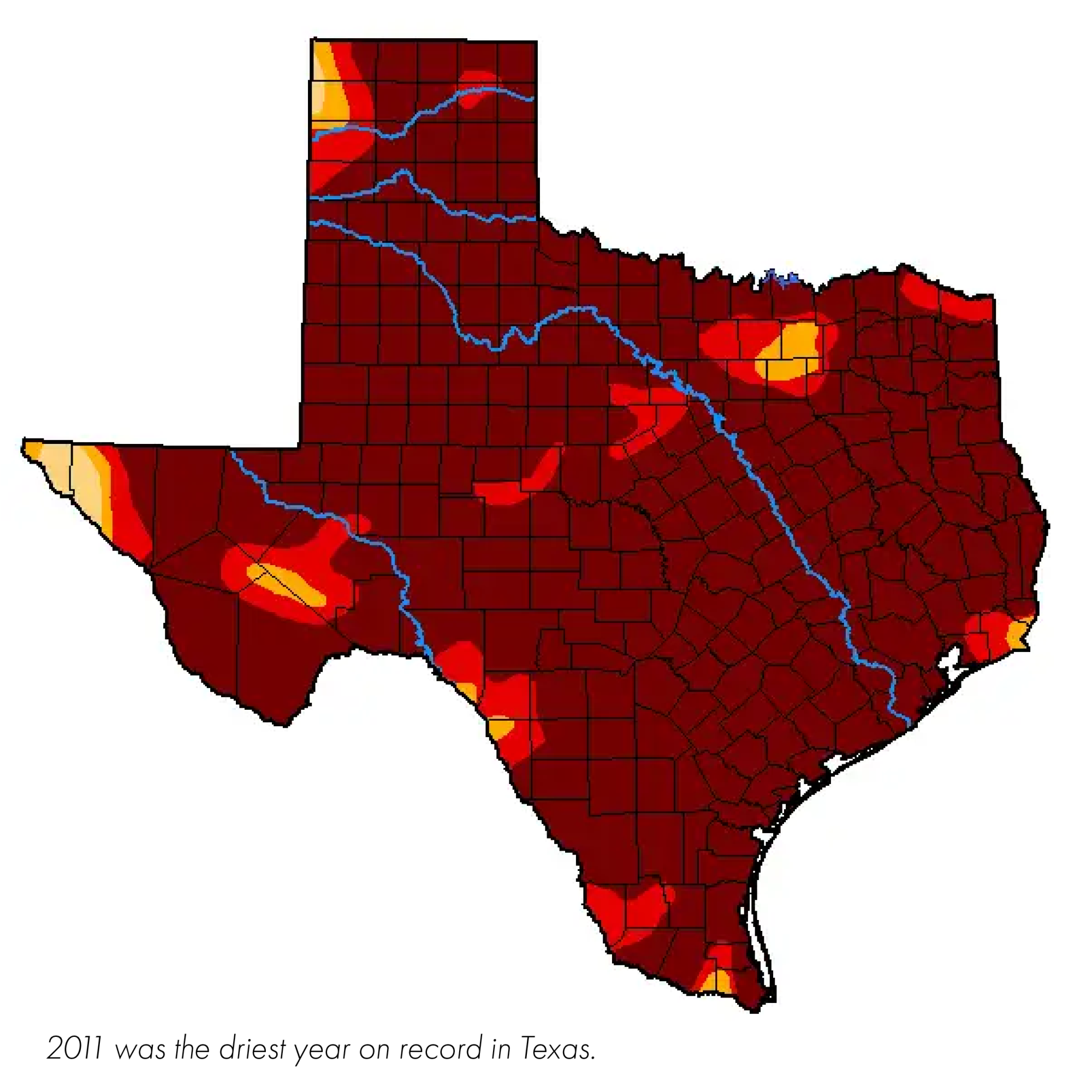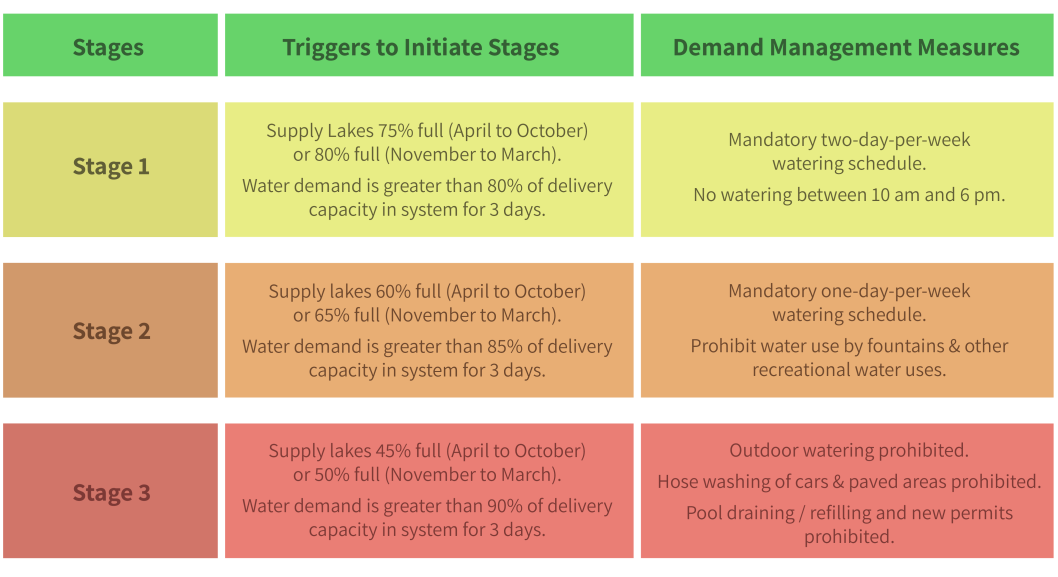Drought & Emergency Management
Upper Trinity currently operating in:

Drought is a part of life in North Texas. Many residents may not realize we’re in a drought until they see low lake levels or when watering restrictions are implemented. In general, a “drought” is a period of below-average rainfall that, depending on severity and duration, can substantially reduce , which are the main source of drinking water for North Texas. For example, Upper Trinity can implement Stage 1 of its Drought Contingency Plan once lake levels fall below 75% full. Since drought conditions can develop quickly, it is important to be prepared and to always practice water-saving habits. Since outdoor watering accounts for an estimated 50 – 70% of water usage during the warmer months, reducing outdoor watering is the most effective way to save water. Find great tips at our page.
In addition, the water system infrastructure in place to provide drinking water (water treatment plants, pipes, and pumps) may experience issues during a drought, such as a pump failure or very high demand that stresses equipment. In these situations, emergency measures to lower water usage, such as in the Drought Stage table below, must be initiated to prevent further damage to the system.
The Texas Commission on Environmental Quality (TCEQ) has mandated that water providers, like Upper Trinity, adopt to reduce water usage and extend water supplies during times of drought or emergency. Upper Trinity’s current Drought Contingency Plan was designed to successfully manage the while meeting the needs of its wholesale Customers.

As part of these Plans, each water provider must establish a series of drought “Stages” that are triggered based on certain circumstances, such as when the lake levels drop to a certain point. Upper Trinity currently has three drought stages that each have their own set of demand management measures to reduce water use in each stage. As a wholesale water provider, Upper Trinity relies on its Customer municipalities and utilities to implement and enforce these measures in their respective communities.
Upper Trinity coordinates with other regional water providers to establish consistency in the number of drought stages and the measures taken to reduce water use and improve efficiency during critical times. The table below shows the triggers used to initiate certain drought stages (although in certain situations the Executive Director may deem it necessary to implement certain stages), as well as examples of demand management measures in each stage to reduce water use. To understand the drought stage triggers and all the demand management measures for each stage, click the link below to view Upper Trinity’s Drought Contingency Plan. (Be advised that there may be variations in the Drought Contingency Plans between Upper Trinity and its Customers, so be sure to check the requirements for your city or utility, which may include designated watering days.)

Additional Resources:
